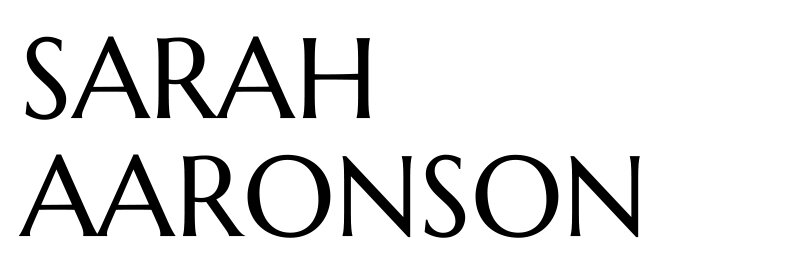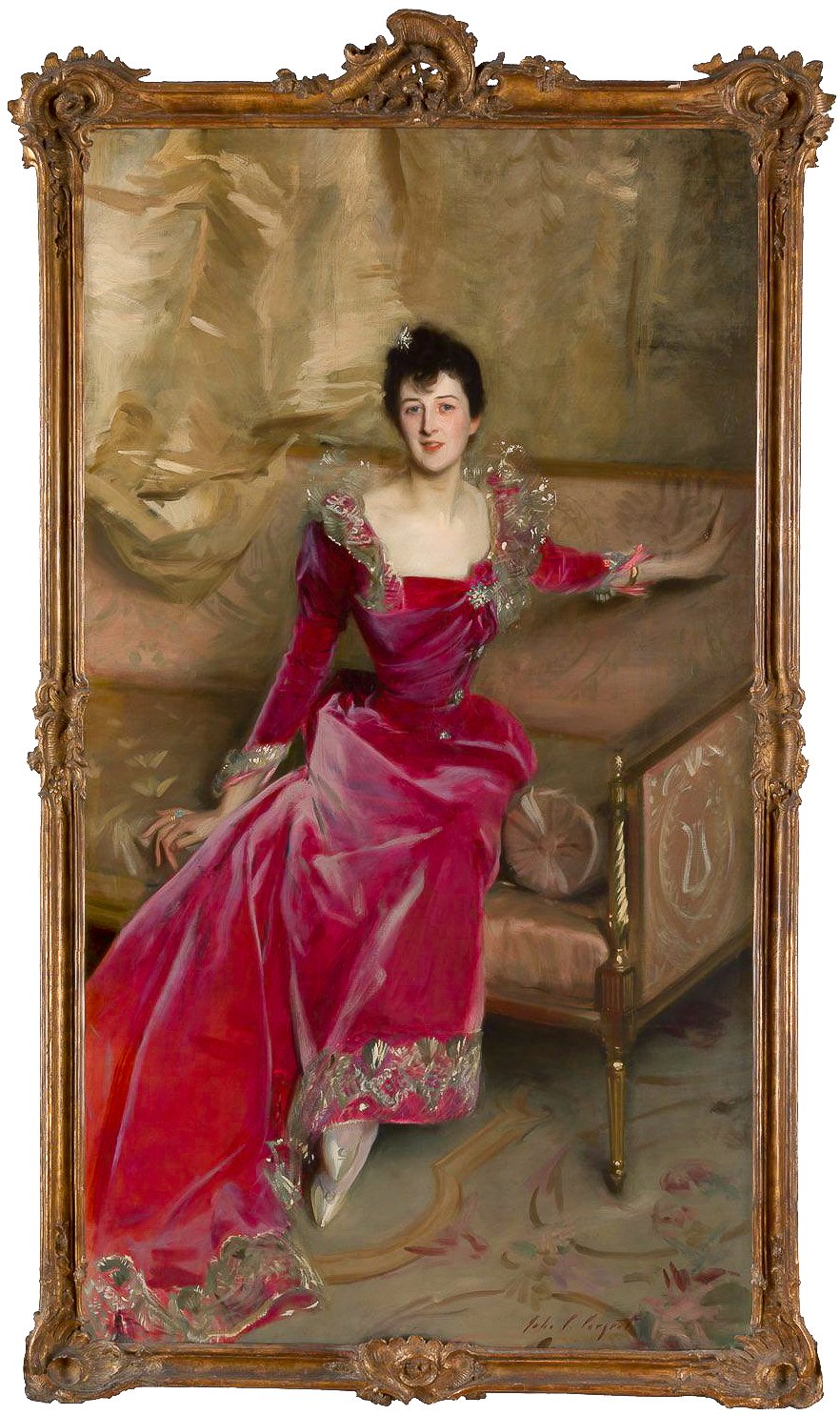PRETTY IN PINK
Perhaps American painter John Singer Sargent's use of a vibrantly rebellious shade of fuchsia in his 1892 portrait of Mrs. Hugh Hammersley, paved the way for Martin Margiela’s provocative Fall / Winter 1995 Collection... Both Sargent’s painting and Margiela’s garments were seen by some as radical and questionable in taste, yet through the eyes of those in the know, they were seen as refreshingly brave and brilliantly modern. Boldly colored fabrics, often with large-scale designs, were widely seen in fashions of the 1890s, proving the vibrant gown in the portrait to be quite minimal by comparison. Margiela’s magenta velvet gowns were simplistic as well, undoubtedly an expected swing from the ostentatious ornamentation of the previous decade. Beginning with Sargent’s easel cloaked in white canvas and Margiela’s assistants’ cloaked in white lab coats, both artist and designer found their inspiration in color nearly one hundred years apart.
Mrs. Hugh Hammersley • Oil on Canvas • 1892 • John Singer Sargent • The Metropolitan Museum of Art, New York City
“John Singer Sargent's portrait of Mrs. Hugh Hammersley portrays a captivating, vivacious woman gracefully posed on a French sofa... The bold color of her dress was described as daring by many contemporary critics. A critic for the Saturday Review described the velvet of the dress as being painted with ‘almost violent prominence,’ while the Athenaeum's art critic highly praised the work, lauding Sargent's use of color and the harmony between the intense colors and the sitter's flesh tones. The color of Mrs. Hammersley's gown was daring because it risked being declared crude rather than refined, and discordant rather than harmonious with the rendering of the sitter herself.” • Jessica Regan • The Met Costume Institute • All runway images courtesy of Vogue
“What distinguished this show, besides the face masks, was Margiela’s use of color. Hot pink, garnet, and lavender mingled with navy and black in a lineup that included everything from a floor-length crushed velvet dress to a petit écolier–style cape to mechanics’ jumpsuits... Depending on one’s perspective, the overall effect was either an edgy street vibe or what The New York Times called a “Salvation Army mood.”• Laird Borrelli–Persson for Vogue
Mrs. Hugh Hammersley • Oil on Canvas • 1892 • John Singer Sargent • The Metropolitan Museum of Art, New York City
Detail of Mrs. Hugh Hammersley • Oil on Canvas • 1892 • John Singer Sargent • The Metropolitan Museum of Art, New York City
Fuchsia Velvet Gown & Leather Sleeves • Maison Martin Margiela Autumn / Winter 1995 Fuchsia Collection • Palais Galliera, Paris
Margiela Tabi shoes photographed under a layer of pink • Maison Martin Margiela Autumn / Winter 1995 • Anders Edström
Detail of Mrs. Hugh Hammersley • Oil on Canvas • 1892 • John Singer Sargent • The Metropolitan Museum of Art, New York City
A behind the scenes view of the Maison Martin Margiela Autumn / Winter 1995 show • Tatsuya Kitayama • Image courtesy of Maison Martin Margiela : Street Special 1 & 2 guest edited by Maison Martin Margiela
An actual fragment of fabric from Mrs. Hammersley’s fuchsia velvet gown in front of Sargent’s 1892 portrait illustrating just how closely the colors match • Image courtesy of the article John Singer Sargent’s Mrs. Hugh Hammersley : Colorants and Technical Choices to Depict an Evening Gown via The University of Chicago Press Journals
Detail of Mrs. Hugh Hammersley • Oil on Canvas • 1892 • John Singer Sargent • The Metropolitan Museum of Art, New York City
An actual fragment of the silk velvet from which Mrs. Hammersley’s fuchsia velvet gown was made • Campbell Archive, The American Wing, The Metropolitan Museum of Art, New York City • Image courtesy of the article John Singer Sargent’s Mrs. Hugh Hammersley : Colorants and Technical Choices to Depict an Evening Gown via The University of Chicago Press Journals
A behind the scenes view of the Maison Martin Margiela Autumn / Winter 1995 show • Tatsuya Kitayama
Samples of black, red, pink and fuchsia fabrics from the Maison Martin Margiela Autumn / Winter 1995 collection • Anders Edström
Sargent’s signature at the bottom of his portrait of Mrs. Hugh Hammersley • 1892 • John Singer Sargent • The Metropolitan Museum of Art, New York City

















